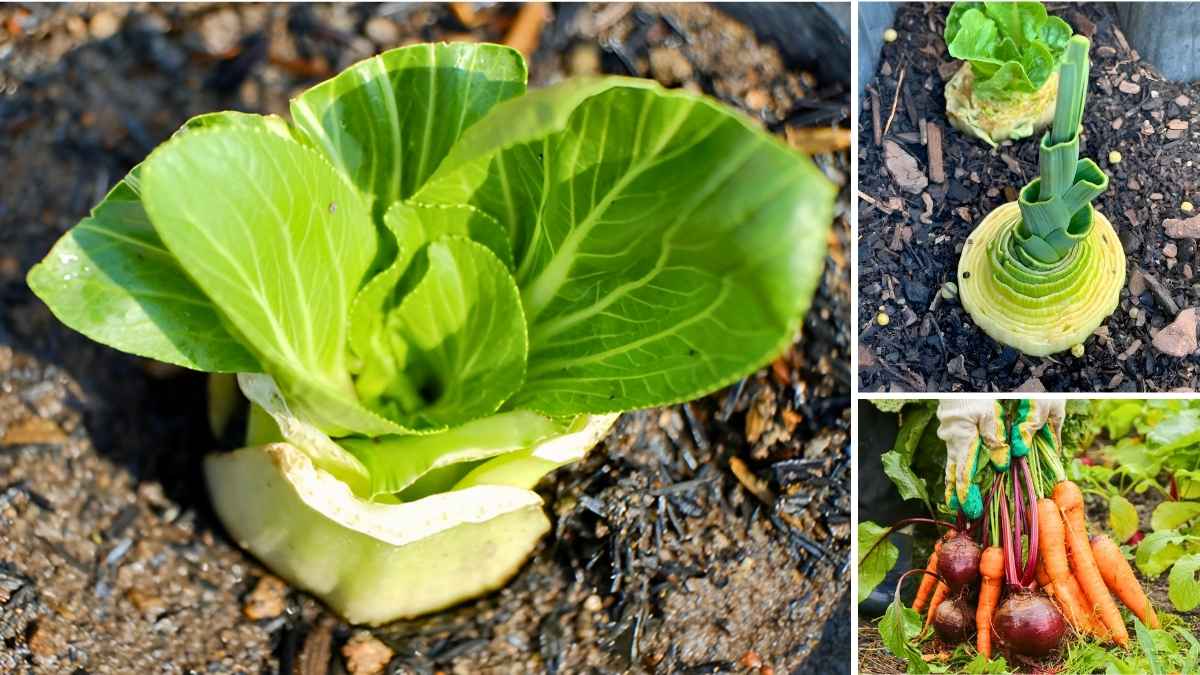Join on WhatsApp
Get the latest updates directly on WhatsApp – motivation, news & more!
If you’ve ever tossed herb stems or roots into the trash after cooking, you might be surprised to learn you’re also throwing away an opportunity. Many popular kitchen herbs can be regrown right from the leftover stems, roots, or even leaves. This not only saves money, but also ensures you always have fresh herbs within reach. Here are ten common kitchen herbs you can regrow from scraps with minimal effort.
Basil
Basil is one of the easiest herbs to regrow from cuttings. Simply take a stem that’s about 4 to 6 inches long, remove the lower leaves, and place it in a glass of water. Make sure the leaves don’t touch the water to prevent rot. Place the glass in a sunny window and wait about a week or two for roots to develop. Once they’re a couple of inches long, you can transplant your basil into a pot with soil. Keep the soil moist and in a sunny location, and you’ll have fresh basil ready for your next pasta dish.
Mint
Mint is a hardy herb that regrows quickly and spreads easily, making it perfect for indoor or container gardens. Take a cutting from a healthy mint plant, about 4 to 5 inches in length. Place it in a jar of water in indirect sunlight, and within a few days, you’ll see roots beginning to form. After the roots are a few inches long, plant it in soil. Keep it watered but not soggy, and watch as it fills your kitchen with its refreshing aroma.
Cilantro
Cilantro can be a bit tricky due to its short life cycle, but you can regrow it from the stems if you act fast. Use stems that are at least 3 inches long, and place them in a glass of water. Keep the water fresh and change it every few days. Within a week or two, you should see new roots sprouting. Once the roots are substantial, transfer the cilantro into soil and place it where it can receive plenty of sunlight. Be sure to harvest it often to extend its growth.
Green Onions
Green onions are possibly the easiest kitchen scrap to regrow. After using the green tops, leave about 1 to 2 inches of the white root ends. Place them in a small glass with just enough water to cover the roots. Put the glass on a sunny windowsill, and within days you’ll see new green shoots emerging. You can keep trimming and using the green parts, and they’ll keep regrowing. For longer-term growth, transplant them into soil.
Thyme
Thyme is another herb that can be regrown from cuttings. Select healthy stems that are still green and pliable, not woody. Strip off the leaves from the bottom half of the cutting, and place the stem in water or moist potting soil. If rooting in water, change the water every few days. Once roots form, transplant the thyme into a small pot. It loves sunny windowsills and slightly dry soil, making it an easy herb to manage indoors.
Lemongrass
Lemongrass is often used in Asian cooking and can be regrown with just a leftover stalk. Place the base of the lemongrass stalk in a glass of water, and set it in a warm, sunny spot. Roots will begin to grow within a couple of weeks. Once the roots are about 1 to 2 inches long, plant the stalk in soil. Lemongrass needs a lot of light and warmth, so it does best near a window or outdoors during warmer months.
Oregano
Oregano can be regrown using soft stem cuttings. Choose a fresh, healthy stem and cut a piece about 4 inches long. Remove the leaves from the lower half and place the cutting in water. Keep the water clean and the glass in a sunny spot. After a week or two, roots will begin to form. Transplant the oregano into a pot with well-drained soil and keep it in a warm area with plenty of sunlight. Oregano thrives when it’s regularly harvested, so don’t hesitate to use it often.
Rosemary
Rosemary takes a bit longer to root than some other herbs, but it’s well worth the wait. Take a 4- to 6-inch cutting from a fresh rosemary stem. Strip off the bottom leaves and place the stem in a glass of water. This process may take several weeks, so patience is key. Once the roots grow to about 1.5 to 2 inches long, plant the rosemary in soil. It prefers full sun and slightly dry conditions, so make sure not to overwater it.
Chives
Chives regrow similarly to green onions. After cutting the tops, leave the bulbous base intact. Place the roots in a glass with enough water to cover just the roots. Keep the glass in a sunny location, and you’ll soon see fresh green shoots popping up. Chives grow quickly and don’t need much attention. Once the growth is established, you can plant them in soil or continue to grow them in water, trimming as needed.
Parsley
Parsley is a biennial herb, and while it takes a little more patience, it can be regrown from stems. Choose a healthy, firm stem and place it in water near a sunny window. Keep the water clean and change it every few days. New roots will take a couple of weeks to appear. Once they do, you can move the plant to soil. Parsley prefers consistent moisture and partial to full sunlight. With care, it will continue to produce fresh leaves for many months.
Start Your Indoor Herb Garden Today
Growing herbs from scraps isn’t just a fun experiment it’s a practical and sustainable way to keep your kitchen stocked with fresh flavors. With just a few jars of water, a sunny windowsill, and a bit of patience, you can transform what would be waste into a thriving indoor herb garden. Whether you’re a seasoned cook or a beginner in the kitchen, these regrown herbs offer a rewarding and aromatic addition to your meals and your home.




